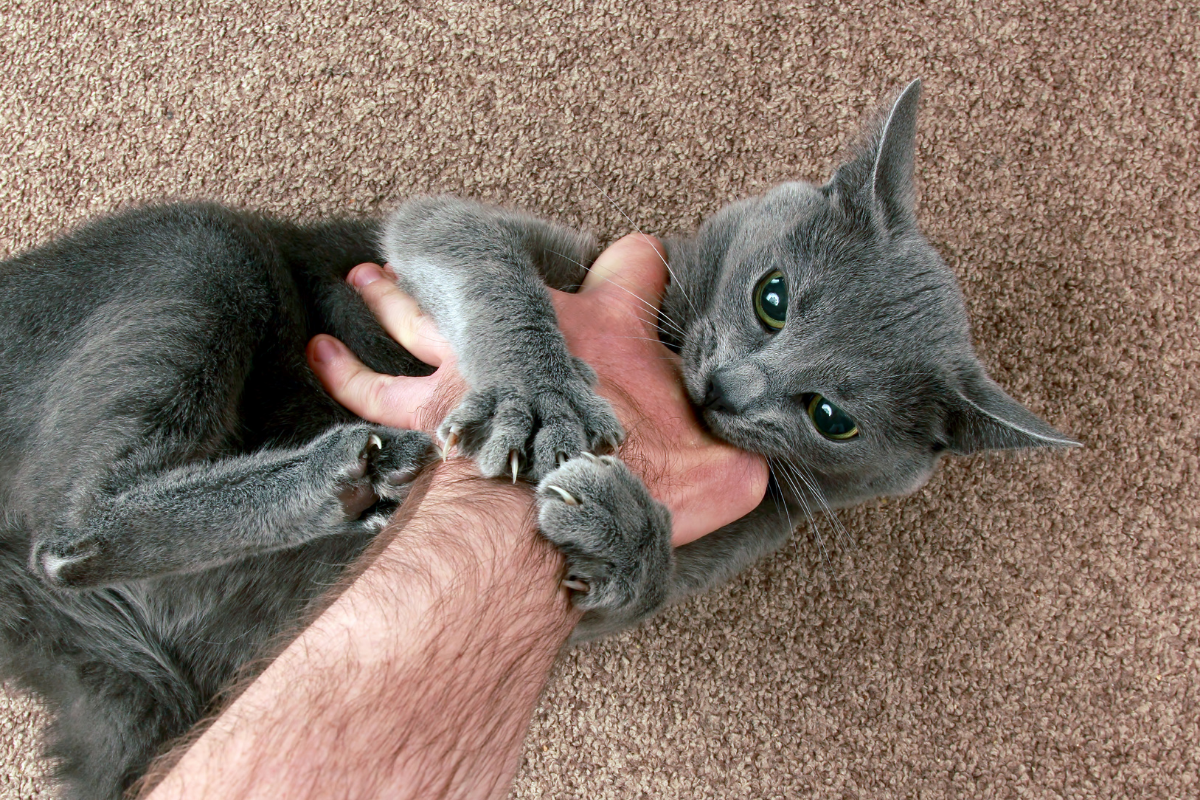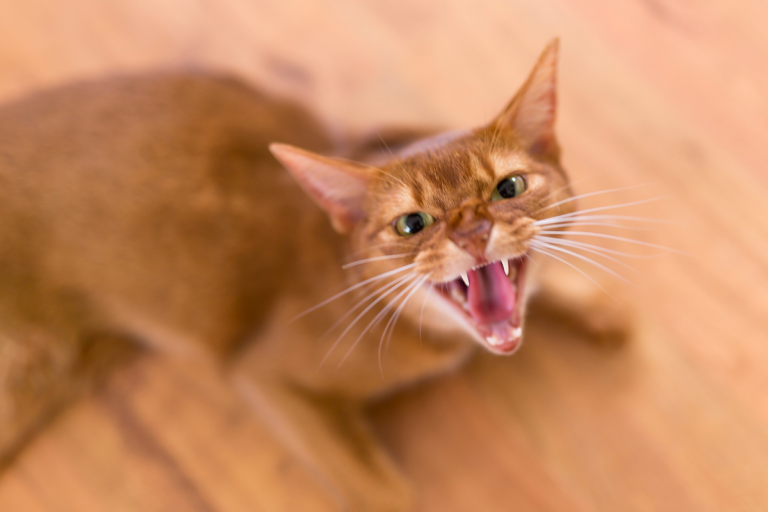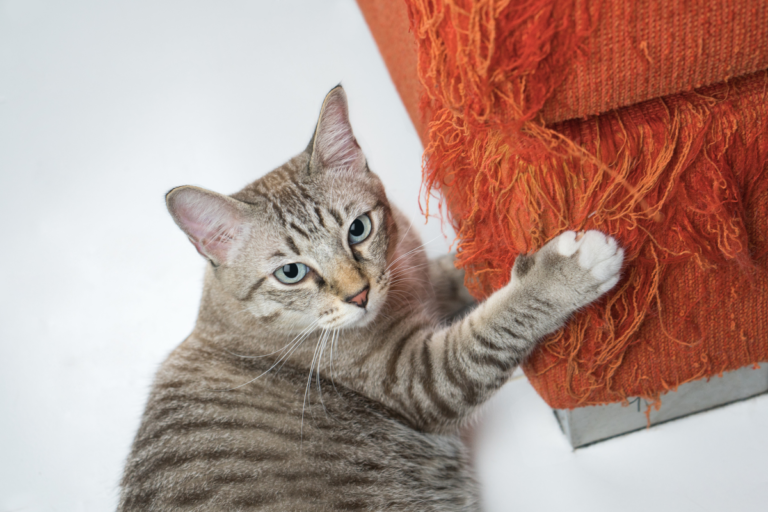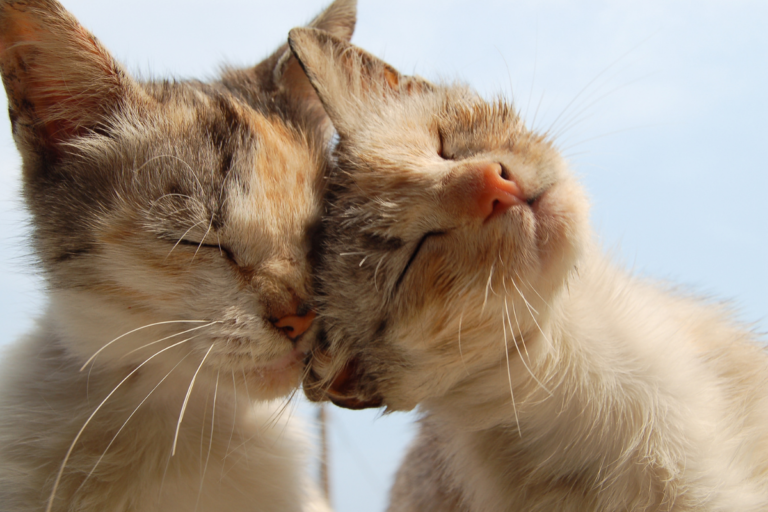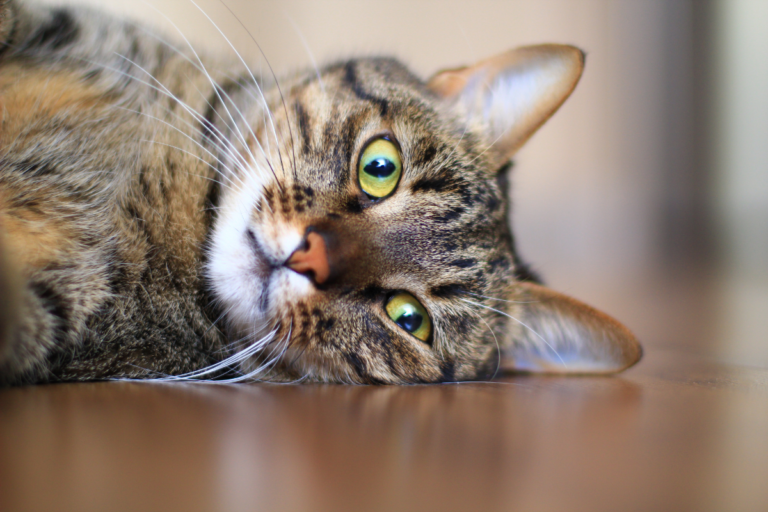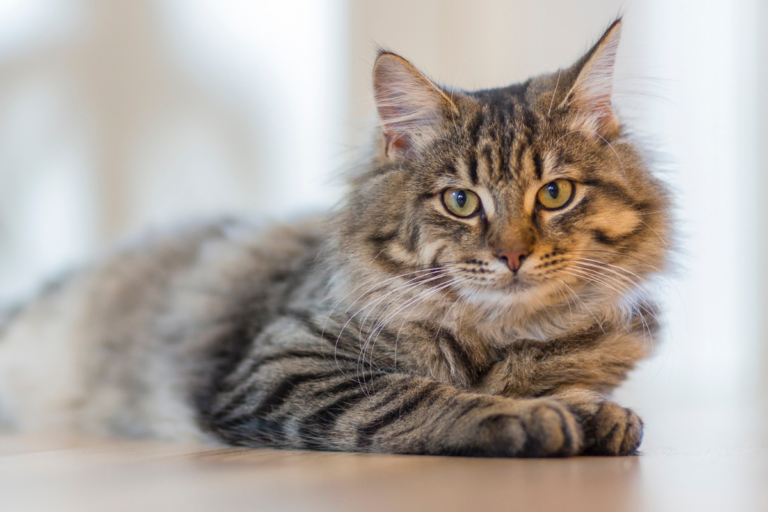The Battle of The Bites: How to Handle Your Cats Biting Habits
Understanding Cat Biting Behavior
Being a cat owner comes with its own set of quirks, especially when it comes to understanding why your feline buddy decides to use their teeth. Knowing the reasons behind these love nibbles (or not-so-love nibbles) can be super helpful in keeping the peace at home.
Why Cats Bite
Cats bite for all sorts of reasons, tied to their whims or emotions, and figuring these out is key to keeping them happy and healthy.
-
Communication: Sometimes a cat’s bite is their way of saying, “Hey, enough already!” They might want you to back off or be inviting you to join their version of fun.
-
Playfulness: For kittens, your hand is just a fun, wiggly toy to sink their baby teeth into.
-
Affection: Those soft nibbles? Think of them as kitty kisses from your furball, similar to how momma cats interact with their little ones (Stella & Chewy’s).
-
Stress or Illness: If a kitty is feeling on edge or under the weather, they may bite to create distance or show they need help.
-
Overstimulation: Imagine too much petting as an overload of tickles—sometimes cats need a break and give a quick nip to let you know (PetMD).
Spotting Different Biting Styles
Tuning into the different types of bites can be like unlocking a secret code to what’s going on in your cat’s mind.
-
Love Bites: These are like the “I like you” nibbles you might get in quiet, snuggly moments. They’re usually painless and the cat’s way of bonding (Stella & Chewy’s).
-
Play Bites: These tend to happen in the middle of playtime mania—expect some pouncing and swatting to go along with it.
-
Overstimulation Biting: If your cat’s tail starts twitching or ear flattening mid-pet, be ready for some gentle nibbling. They’re politely saying, “Break time!” (USA Today)
-
Aggressive Biting: Look out for aggressive signals like hissing or an arched back. This kind of bite can come out of fear or pain and is more serious business.
Here’s a cheat sheet for handling biting styles:
| Type of Bite | Signs | Why It Happens |
|---|---|---|
| Love Bites | Soft nibbles | Affection |
| Play Bites | Swatting, pouncing | Playfulness |
| Overstimulation Bites | Licking that turns to nibbles | Too much petting |
| Aggressive Bites | Hissing, growling | Fear or pain |
Catching these cues before they turn into bites can save you (and your fingers). Want more on this? Check out our takes on cat aggression and cats behavior.
Figuring out your cat’s biting antics isn’t just for them but makes things more harmonious for both of you. Curious about more cat antics? Look into our guides on cat yowling and cat head butting.
Addressing Common Cat Biting Problems
Struggling with your cat’s biting habits? You’re not alone, and trust me, it’s not as scary as it seems. Understanding what’s making your little buddy chomp down is the first move toward peace. Let’s chat about two key reasons your cat might be biting: overstimulation or love bites, and nipping due to pain or fear.
Overstimulation and Love Nibbles
Ever been cuddling your cat when those gentle licks suddenly turn into little nibbles? Love bites are pretty confusing. They’re like a cat’s way of saying, “I love you… but also, back off a bit!” If your kitty’s pupils are looking like saucers, their ears flatten, or their tails act like they’re at a rock concert, it’s probably overstimulation talking.
Here’s what to do about it:
- Spotting the Signs: Watch for the shift from purring to nibbling, flat ears, and that twitchy tail.
- Your Game Plan:
- Stay Alert: Keep an eye on your cat’s mood signals so you can adjust before the nibbling begins.
- Paws Off: Stop petting when they show overstimulation cues; they’re saying they’ve hit their limit.
- Distract with Fun: Bring in a toy – something they can pretend to hunt like a feathery wand. This redirects their energy positively.
For tips on understanding your cat better, check out our cat behavior articles. They’re a treasure trove of kitty wisdom.
Nipping from Pain or Fear
Biting can also mean your feline is hurt or scared. Just like us, cats can get grumpy or defensive when uncomfortable. Knowing the signs is half the battle.
-
Reading the Room:
- Pain Signals: Are they jumpy when you touch certain spots? Do they shuffle like an old man, or skip meals? These could be pain clues.
- Fear Clues: If they’re all wide-eyed and crouching like they’ve seen a ghost, or hissing and bolting for the hills, they’re in fear mode.
-
What to Do:
- Vet Visit: Suspect pain? A trip to the vet can offer clarity and relief.
- Safe Havens: Provide quiet nooks for your cat to chill out in peace.
- Gentle Touch: Go slow and soft when handling, and steer clear of surprises that might spook them.
- Stress Busters: Remove scary sights and sounds as much as possible.
To crack fear-based biting, dig into what sets them off. Is it the mailman, a noisy TV, or another pet? Once you’ve got a handle on the triggers, work on slowly helping your cat to see them in a new light. It’s all about easing their mind and making unwanted behaviors vanish.
Remember, if biting only escalates, or you’re scratching your head for answers, peek at our cat psychology section for more expert advice.
Whether it’s the overly affectionate nibble or a downright frightful chomp, understanding the “why” behind your cat’s bites takes you a long way toward a happier pet. For even more tidbits on related conundrums, have a browse through our guides on cat aggression, scratching issues, and when your cat meows like it’s auditioning for a musical.
Training Techniques for Cat Biting
Redirecting Biting Behavior
Cats have a thing for biting, especially when they play. It’s just part of their mini lion act. Problem is, they don’t always get how much those cute little nibbles can sting (Stella & Chewy’s). Whenever my furball starts getting too toothy, I steer them towards toys. It’s all about redirecting their chompy instincts away from me and towards something safe and fuzzy.
Here’s my game plan:
- Feather wands
- Laser lights
- Catnip critters
- Brain-teasing puzzle toys
| Toy Type | Doing What? | Example |
|---|---|---|
| Feather Wands | Copies prey moves | Da Bird Feather Toy |
| Laser Lights | Gets them to chase | PetSafe Bolt Laser |
| Catnip Toys | Excites and chills them out | Yeowww! Catnip Toys |
| Puzzle Toys | Puzzles their little minds | Petstages Tower of Tracks |
When my kitty tries to make a snack out of me, I hit pause on the fun and grab a toy. They soon learn that teeth mean playtime’s over. Keep it consistent, and soon your cat’ll be channeling their wild side into their playthings instead of your limbs (USA Today).
Positive Play and Interaction
Playing’s a must for kitty happiness, but it’s also prime time for biting. Those mouths aren’t just there for meowing, after all; they like to pounce, grab, and chew. It’s their inner hunter at work (USA Today).
Here’s how I keep play time friendly:
- Play Dates: I pencil in some fun time every day. Short and sweet sessions often help burn off all that excess feline energy.
- The Reward System: When my cat plays nice, I shower them with pets or a tasty treat. It’s all about letting them know that gentle play brings good vibes.
- Chill Zone: Cats sometimes get wound up. I try to keep it low-key, avoiding sudden bangs or frantic movements that might cause a bite spree.
The real trick is knowing when my kitty’s getting too hyped. Things like a twitchy tail, slicked-back ears, or bugged-out eyes mean it’s time to cool things down before I get chomped on. This is especially true for the younger ones who are just figuring out their playful and predatory moves (ASPCA).
To explore more about your fluffy companions’ quirks, you can check our resources on cats behavior and tabby cat behavior.
By mixing in redirection fun and positive play tactics, I keep my kitty’s biting in check. It’s about tuning into what they need and giving them the right ways to act on their wild house-cat instincts.
Managing Aggressive Cat Biting
Trying to deal with a cat that bites like a wild beast can be a real headache. The first step is understanding what’s pushing their buttons and finding a way to mellow them out.
Spotting What Sets Them Off
You ever seen your cat hiss, spit, or puff up like a furry balloon? That’s a sure sign they’re not happy campers. Cats have strong opinions and hold grudges. Here’s some dirt on why your feline might become a bite monster:
- Rough Past: If your kitty’s got a history that includes a lot of spookiness or worse, they’re bound to get feisty. Offering them a calm, cozy space can sometimes help them chill out.
- Space Invaders: Cats have personal bubbles too. New pets or folks in their turf can set them off, turning cuddles into combat.
- Misplaced Anger: Sometimes your cat will see something they want to tear into—a bird outside—and you end up catching their wrath. They’re worked up, but the real target’s out of reach, poor you.
Here’s a quick cheat sheet:
| Trigger | What It Means |
|---|---|
| Rough Past | They’re jumpy from past bad vibes. |
| Space Invaders | New creatures in their domain make them go defensive. |
| Misplaced Anger | They get mad at something they can’t reach and you pay the price. |
| Having Hurts | Pain makes even the sweetest cat a scratchy mess. |
| Bad Social Skills | They’re not used to two-legged creatures, so they misread human intentions. |
| Natural Hunter | Cats are little predators; when they’re “playful” it can hurt! |
Getting a Pro Onboard for Serious Chompers
If your cat’s biting is way past what you can handle, call for backup.
- Vet Visit: Sometimes, they bite because something hurts. Your cat’s not just moody—they might be sick. Get a pro to check them out.
- Cat Whisperer: For those gnarly cases, like redirected anger, a cat behaviorist could be your best friend. Think of them as a life coach for your kitty with some behavior correction magic.
- Bribery that Works: Wave a treat or two and reward the good, not the bad. A little positive reinforcement goes a long way!
For more kitty drama advice, check out our chats on cat aggression and cat behavior.
Getting your cat to play nice can be tough, but with some patience and the right advice, you can curb that biting. Remember, keep your cool and maybe wear some gloves for those trickier times.
